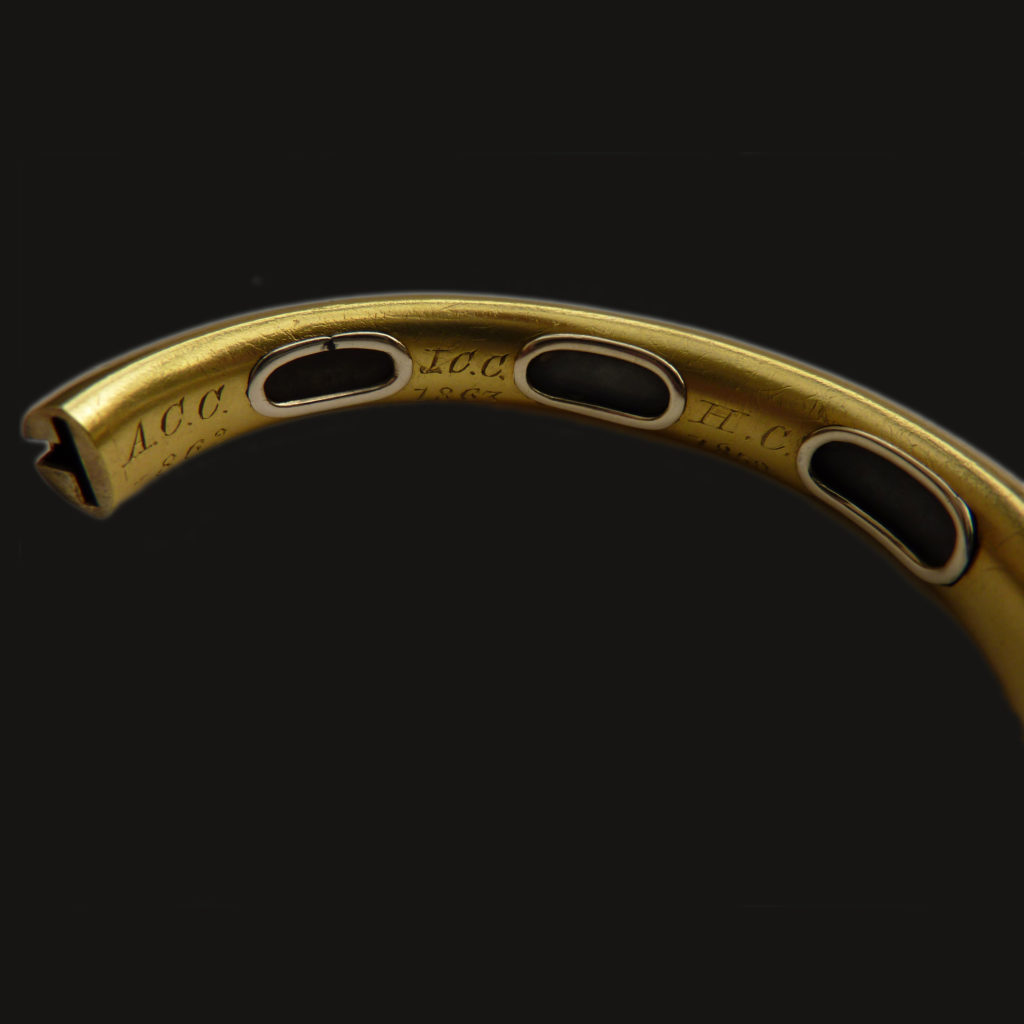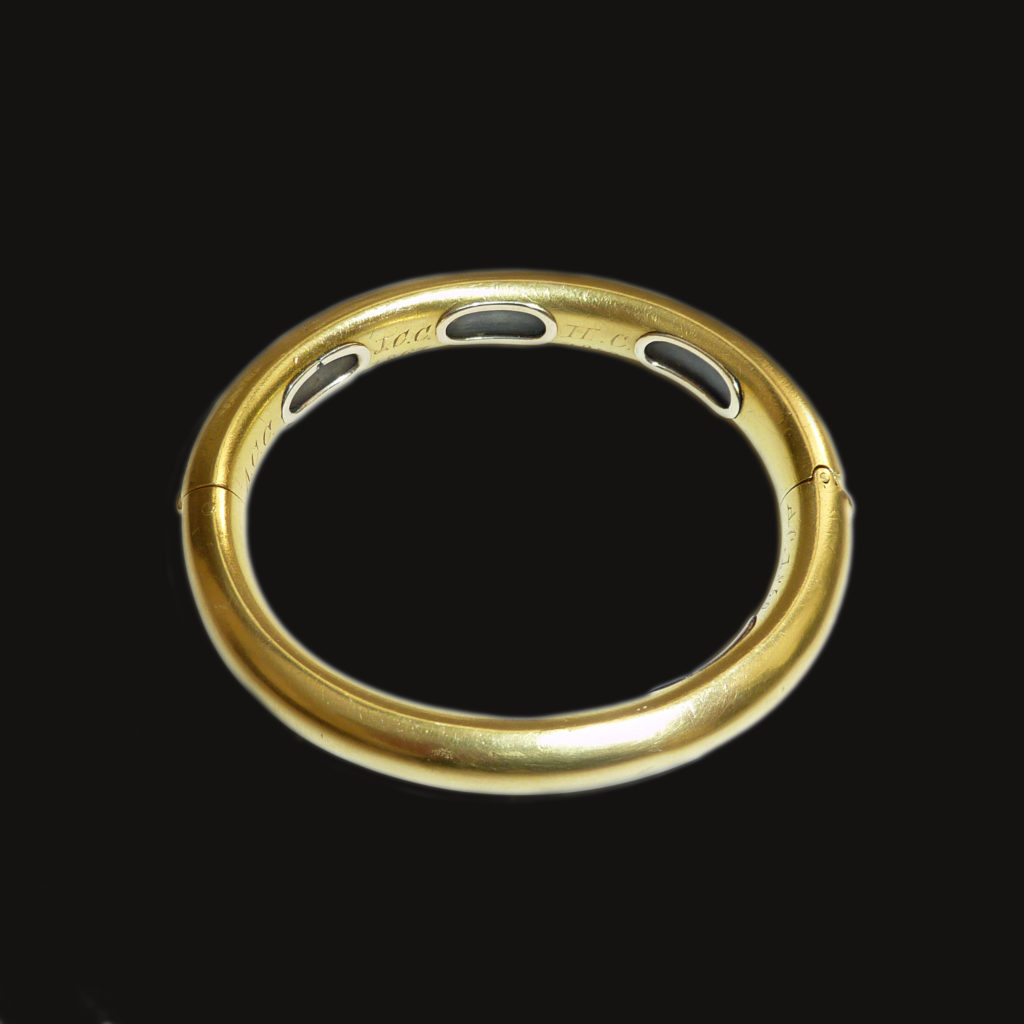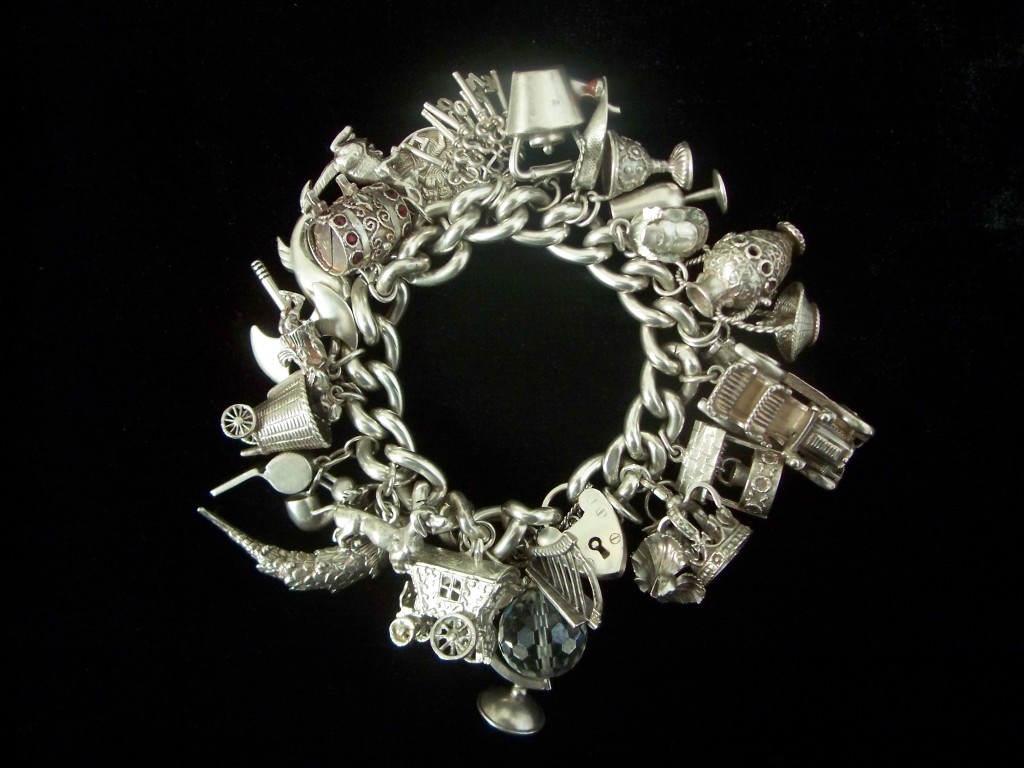Turquoise Hairwork Bracelet
Depending on the weave, hairwork can stretch to the size of the wearer. Turquoise beads and late 19th Century etching provide the flourishes to the above example. In its original size, the bracelet would hardly fit over a hand, but the piece can stretch to fit.
It’s the clasp, or fitting, in many of the late Victorian hairwork bracelets that often lead to the right analysis (or at least one which is more accurate than simply saying ‘late Victorian hairwork’).
Looking at this bracelet, the first thing to identify is the use of turquoise in the ribbon motif across the fitting. I use the term ‘fitting’ in this case, as this is not a clasp; the hairwork expands with its open-weave in an accordion style to fit over the hand and wrist. Turquoise was often used as a during the half half morning stage, post Third Stage (or Ordinary stage) as a mourning material, with its influx of colour. This stage was introduced after twenty-one months, involving the omission of crape, inclusion of black silk trimmed with jet, black ribbon and embroidery or lace were permitted. Post 1860, soft mauves, violet, pansy, lilac, scabious and heliotrope were acceptable in half mourning. This period lasted three months. The English Woman’s Domestic Magazine stated that ‘many widows never put on their colours again’ and this was quite a statement for the identity of the woman, which was held under the veil of mourning and family symbolism for the rest of her life.
Here, we see that turquoise is used for its sentiment of ‘prosperity, youth innocent love / fortune favours thee’, when combined in the ribbon/knot motif.
The knot is most often seen with the Celtic influences, but many second-half 19th century rings retained a knot motif, often seen as a twist, in various styles and materials.
There are quite a few variations on the knot, one of the more popular being the Celtic knot, which is dated to around 450 CE, which is often referred to as the ‘mystic knot’ or the ‘endless knot’. In this, there is the allusion to birth and rebirth. The expression ‘tying the knot’ is thought to be where the couple had their hands bound in an endless knot as part of the wedding ritual, however, there are several other explanations for this related to the wedding ceremony itself. One of the more enticing explanations from E., M. A. Radford’s The Encyclopedia of Superstitions is that:
“In the seventeenth century, one or two of the bride-favours were always blue. These were knots of coloured ribbons loosely stitched on to the wedding gown, which were plucked off by the guests at the wedding feast, and worn as luck-bringers in the young men’s hats.”
However, we’re here for jewellery, so where can you find the knot and what would you expect?
For Neoclassical pieces, you can’t go much further than the depiction above that explicitly uses the knot as a primary symbol and sentiment. Look for the knot to appear in many Neoclassical mourning and sentimental depictions, either as an overt statement or relegated to a symbol being held by a central figure or as a flourish depicted in the art. Often, this can be as subtle as a knot painted onto a plinth or tomb.
Knots in necklaces were also popular from the 1860s onwards, with the necklace itself twisting into a knot around the chest. Chains were also tied into the concept of the knot, used in bracelets, necklaces, links in fob chains and other items as well.
With such rich sentiment in the symbolism, this bracelet is clearly a loving token that dates to the post 1860 period.







